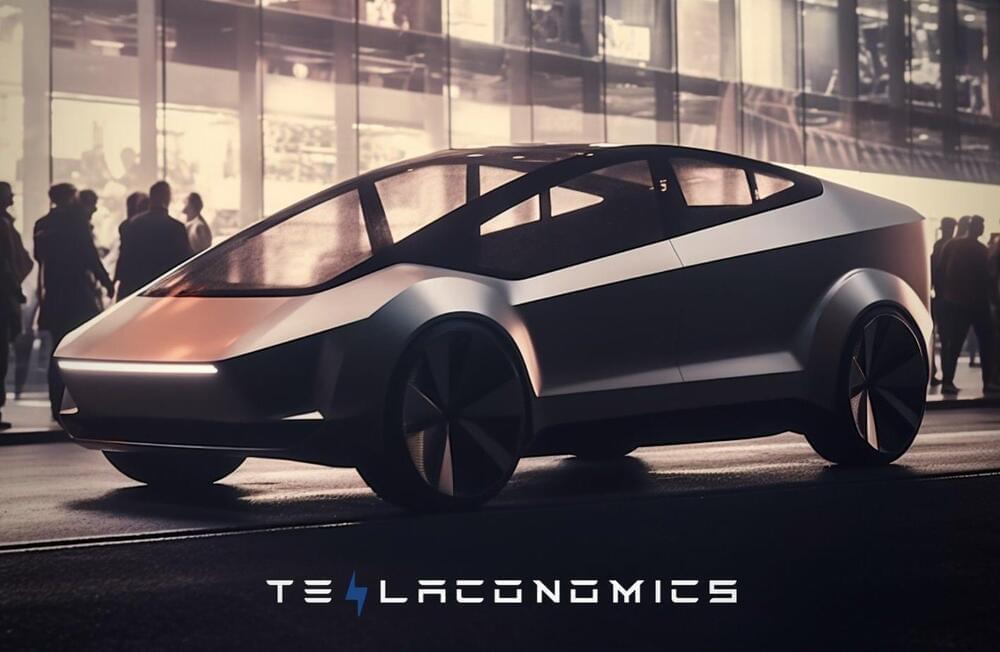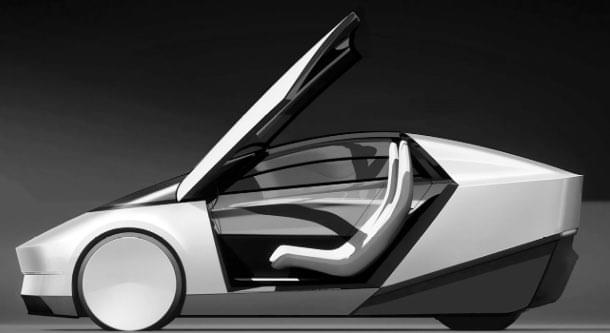Archive for the ‘Elon Musk’ category: Page 9
Jul 25, 2024
Tesla confirms Robotaxi “unboxed” process, production in Giga Texas
Posted by Genevieve Klien in categories: Elon Musk, sustainability, transportation
Tesla CEO Elon Musk confirmed a number of key details about the Robotaxi during the company’s Q2 2024 Update Letter and earnings call. These include the site of the Robotaxi’s production, as well as the manufacturing process that would be used on the vehicle.
It would not be an exaggeration to state that the Robotaxi unveiling on October 10, 2024 is poised to be Tesla’s most important event this year. And considering Elon Musk’s noticeable focus on Full Self Driving (FSD), it was no surprise when several questions during the Q2 2024 earnings call were focused on the Robotaxi.
As per Tesla’s Q2 2024 Update Letter, its plans for new vehicles, including more affordable models, are still on track for the start of production in the first half of 2025. These vehicles will utilize aspects of its next-generation and current platforms, and they could be produced on the same manufacturing lines as the company’s current vehicle line-up. As for the Robotaxi, however, Tesla was clear.
Jul 23, 2024
Are Black Holes Cosmic Vaults or Information Gateways?
Posted by Dan Breeden in categories: cosmology, Elon Musk, quantum physics, singularity, space travel

They say that we ultimately lose information once it enters a black hole, but is this really the case? Let’s find out on today’s video. Have you ever wondered what happens to information when it falls into a black hole? Does it get destroyed forever? Does it arrive somewhere else? Does it enter a girl’s bookcase and call it for Murf? Is there a way for it to escape? Today, we’re diving into one of the biggest mysteries in physics: the black hole information paradox. But first, why should we care? Well, in case a black hole suddenly pops up in your bedroom or office table, this paradox sits at the intersection of quantum mechanics and general relativity, the two pillars of modern physics, and solving it could unlock new understandings of the universe itself. So, let’s get started. Our journey begins with looking at the basics of black holes and the paradox that has puzzled scientists for decades.
Like any good explainer, let’s begin with the basics. What exactly is a black hole? In simple terms, a black hole is a region in space where gravity is so strong that nothing, not even light, can escape from it. No Brad, it’s not a challenge; calm down. This happens when a massive star collapses under its own gravity, compressing all its mass into an incredibly small, incredibly dense point known as a singularity. Surrounding the singularity is the event horizon, the boundary beyond which nothing can return. Think of the event horizon as the ultimate point of no return. Once you cross it, you’re inevitably pulled towards the singularity, and there’s no way back. Feel like you know well about black holes? Great. Now let’s talk about Hawking radiation. In the 1970s, Stephen Hawking proposed that black holes aren’t completely black; instead, they emit a type of radiation due to quantum effects near the event horizon. This radiation, aptly named Hawking radiation, suggests that black holes can slowly lose mass and energy over time, eventually evaporating completely. But here’s where things get tricky: Hawking radiation is thermal. By that, we don’t mean that it’s smoking or anything, but that it appears to carry no information about any of the stuff that fell into the black hole. And this brings us to the heart of our mystery: the black hole information paradox. How can the information about the material that formed the black hole and fell into it be preserved if it’s seemingly lost in the radiation? With this foundation in place, I feel that we’re now ready to explore the paradox itself and the various theories proposed to resolve it.
–
DISCUSSIONS \& SOCIAL MEDIA
Continue reading “Are Black Holes Cosmic Vaults or Information Gateways?” »
Jul 19, 2024
Neuralink is building a $14.7M site in Austin, TX
Posted by Genevieve Klien in categories: Elon Musk, neuroscience, sustainability
Elon Musk’s Neuralink company is building a $14.7 million site in Austin, Texas.
According to MYSA, Neuralink plans to build new offices in Central Texas. A recent filing with the Texas Department of Licensing and Regulation (TDLR) revealed that Neuralink’s new offices will be at 2,200 Caldwell Lane, Del Valle, TX 78617.
The filings also hint that Neuralink is working on a multi-building campus within a property that stretches 37 acres. The property is located 20 minutes away from Tesla Giga Texas.
Jul 18, 2024
Wrong about Mars again!! Radiation not as deadly as Elon Musk’s critics originally thought!
Posted by Dan Breeden in categories: Elon Musk, space

When Elon’s critics say that Mars colonization is impossible, citing radiation as the main threat. They could not be more wrong…#space #nasa #mars Please…
Jul 15, 2024
Elon Musk Says SpaceX Making ‘Important’ Design Changes To Starship Ahead Of Its Fifth Test Flight
Posted by Genevieve Klien in categories: Elon Musk, space travel
Jul 13, 2024
Elon Musk’s Plan to Put a Million Earthlings on Mars in 20 Years
Posted by Genevieve Klien in categories: biotech/medical, Elon Musk, space travel
Over the last year, he has also ramped up work on what will happen if he gets there.
Mr. Musk, 53, has directed SpaceX employees to drill into the design and details of a Martian city, according to five people with knowledge of the efforts and documents viewed by The New York Times. One team is drawing up plans for small dome habitats, including the materials that could be used to build them. Another is working on spacesuits to combat Mars’s hostile environment, while a medical team is researching whether humans can have children there. Mr. Musk has volunteered his sperm to help seed a colony, two people familiar with his comments said.
Jul 12, 2024
Get Ready for Optimus 2.0! Tesla’s Humanoid Robot is Leveling Up
Posted by Shailesh Prasad in categories: Elon Musk, robotics/AI
Elon Musk teased the next iteration of Tesla’s humanoid robot Optimus 2.0 on X recently.
“The new Optimus design, which will be complete later this year, is something special,” Musk replied to an X post.
In June, Tesla shared a few updates about Optimus and the milestones the humanoid robot has reached over the past year. According to Tesla, Optimus has already undergone three major design revisions. The humanoid robot’s hand were revised four times in the last two years.
Jul 12, 2024
Tesla CEO Elon Musk reiterates single FSD stack update for V12.5.x
Posted by Shailesh Prasad in categories: Elon Musk, transportation
Musk seemed to acknowledge the issue, though he also hinted at upcoming improvements to FSD’s highway performance. “12.5.x will finally combine the city and highway software stacks,” Musk wrote.
This is not the first time that Elon Musk mentioned a single FSD stack for both inner city and highway driving. Back in May, Musk estimated that FSD V12.5 should be out in late June, and the update should see some notable improvements.
Jul 11, 2024
Tesla Robotaxi unveiling event pushed back from August: report
Posted by Genevieve Klien in categories: Elon Musk, robotics/AI, transportation
CEO Elon Musk teased it in April for the first time, and it was set to bring unprecedented momentum to the company’s years of development of Full Self-Driving and fully autonomous driving technologies.
However, Tesla is not quite ready to roll out the Robotaxi prototypes.
First reported by Bloomberg, Tesla is said to need more time to build the first units of the Robotaxi. Because it is built upon the automaker’s next-generation platform, which is to blame for the company’s lack of growth in 2024, more development is needed.















